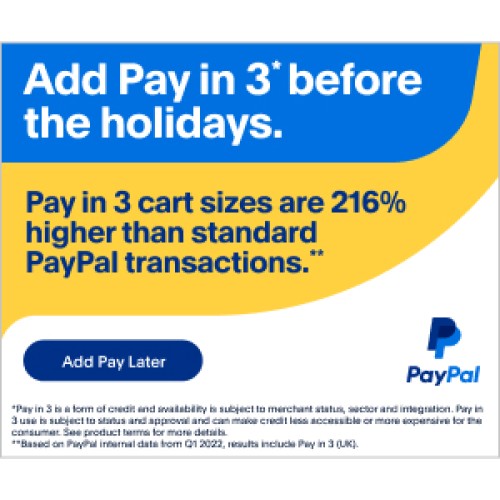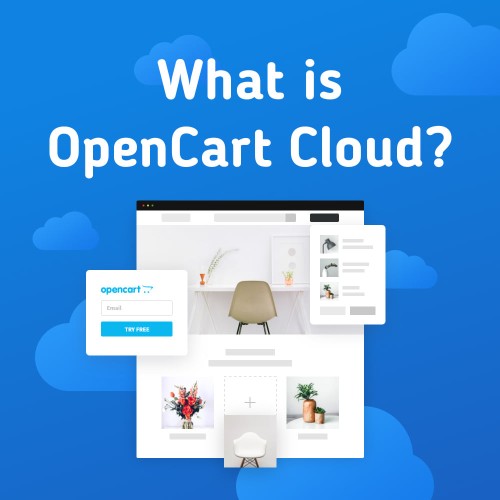Email marketing is one of the most effective ways to reach your customers and promote your e-commerce store. But with so much competition out there, it can be tough to stand out from the crowd. That's where email marketing automation comes in.
Email marketing automation allows you to send targeted, personalized emails to your subscribers based on their behaviour. This means that you can reach the right people with the right message at the right time.
What is Email Marketing Automation?
Email marketing automation is the process of using software to send emails to your subscribers based on certain triggers. This can save you a lot of time and effort, and it can also help you to improve your email marketing results.
There are many different email marketing automation tools available, including OpenCart. OpenCart is a free and open-source e-commerce platform that allows you to create and manage your online store. It also includes a built-in email marketing automation tool that you can use to send newsletters, promotional emails, and other types of emails to your subscribers.
Here is an example of what an email marketing automation workflow might look like
A customer signs up for your email list.
You send them a welcome email.
After a week, you send them a discount code for their first purchase.
After a month, you send them a newsletter with the latest news about your company.
After three months, you send them a survey to ask for their feedback.
This is just one example of an email marketing automation workflow. You can customize it to fit your specific needs and goals.
Additionally, by incorporating seamless application integration and support into your email marketing automation strategy, you can streamline your business processes and ensure a more cohesive customer experience.
Here are three other email marketing automation tools that you can use:
MailChimp: MailChimp is a popular email marketing service that offers a variety of features, including automation.
Constant Contact: Constant Contact is another popular email marketing service that offers a variety of features, including automation.
AWeber: AWeber is a popular email marketing service that offers a variety of features, including automation.
No matter which email marketing automation tool you choose, make sure that it is easy to use and that it offers the features that you need.
5 Email Marketing Automation Tips for Your eCommerce Store
There are plenty of ways to optimize your email marketing campaigns through automation, the five tips we’ll be looking at today are:
Segment your list
Automate a welcome series
Send abandoned cart emails
Send personalized product recommendations
Avoid spamming uninterested subscribers
By following these tips, you can use email marketing automation to reach more customers, increase sales, and grow your ecommerce store.
1. Segment Your List
The first step to effective email marketing automation is to segment your list. This means dividing your subscribers into different groups based on their interests, purchase history, or other factors. In fact, segmented email campaigns can provide up to a 50% higher click-through rate.
For example, if you have a list of subscribers who have purchased products from your store, you could segment them into groups based on the products they purchased. You could then send different emails to each group, promoting products that are similar to the ones they have already bought.
Segmenting your list also allows you to personalize your emails. When you send emails that are relevant to the interests of your subscribers, they are more likely to open and read them. You can also use segmentation to target your emails to specific demographics, such as age, gender, or location.
Segmenting your email list is a great way to improve your email marketing campaigns. By doing so, you can send more relevant and targeted emails, which will lead to higher open rates, click-through rates, and sales. While segmenting your email list is a great way to improve your email marketing campaigns, you also need to monitor DMARC reports to enhance email security and safeguard against potential spoofing attempts.
2. Automate a Welcome Series
A welcome series is a sequence of automated emails sent to new subscribers. It is a great way to introduce yourself and your business, as well as provide helpful information about your products or services.
Welcome series emails are typically sent out over a period of a few days or weeks, and they can be used to:
Thank subscribers for signing up
Introduce your business and what you do
Highlight your products or services
Provide helpful information or resources
Encourage subscribers to take action, such as making a purchase or signing up for a free trial
When done well, welcome series emails can be a very effective way to connect with new subscribers and build relationships.
3. Send Abandoned Cart Emails
Abandoned cart emails are triggered when a customer adds items to their cart but leaves the site without checking out. These emails are designed to remind the customer of the items they left behind and encourage them to complete their purchase.
They can also be used to provide additional information about the products or to offer discounts or promotions. Abandoned cart emails can be a very effective way to recover lost sales and increase revenue.
Studies have shown that more than 40% of abandoned cart emails are opened, and over 21% of users clicked through. From that 21%, 50% converted.
There are multiple things to adjust when automating your abandoned cart emails. Some of these include:
Creating a clear and concise subject line.
Personalize the email by including the customer's name and the items they left in their cart.
Offer a discount or promotion to incentivize the customer to complete their purchase.
Make it easy for the customer to check out by including a link to the checkout page.
Follow up with additional emails if the customer does not respond to the first one.
4. Dynamic Product Recommendations
Dynamic product recommendations are emails that suggest products that a customer may be interested in based on their purchase history or current browsing behavior. This is a great way to increase sales and cross-sell products.
For example, if a customer has previously purchased a pair of running shoes from a company, the company could send them an email recommending a new pair of running shorts. Or, if a customer has been browsing the company's website for winter coats, the company could send them an email recommending a specific winter coat.
Personalized subject lines are more likely to be opened than generic subject lines. Emails that feature personalized subject lines have shown a 26% higher likelihood of being opened.
This is because customers are more likely to be interested in emails that are relevant to them. For example, a customer is more likely to open an email with the subject line "Recommended Products for You" than an email with the subject line "New Arrivals."
5. Avoid Spamming Uninterested Subscribers
Apart from creating personalized emails, it’s also important not to send emails to people who have not opted in for them.
You can do this by using a double opt-in process (where you get their permission before sending them any marketing emails). This will help you avoid spamming anyone who is not interested in receiving your emails in the first place.
Having double opt-in processes in place will also guarantee that the users who are subscribed to your email campaign are users with high interest. These high-interest users are more likely to click through, as well as convert.
Bonus Tip: Don’t Forget to Create an Automated Feedback Email!
While sending out automated order confirmation and shipping notification emails is a great way to keep customers engaged with your brand, there’s another type of automated email that can make a big difference in driving customer loyalty: the feedback email.
By sending out a short and sweet feedback email a few days after a customer has received their order, eCommerce stores can collect valuable insights into how their customers feel about their products, services, and overall shopping experience.
Negative feedbacks can be used to improve operations, find new opportunities to upsell or cross-sell, and ultimately build stronger relationships with customers.
When crafting your feedback email, be sure to keep it short and focused on one or two key questions. This will increase the likelihood that customers will take the time to respond. You might also want to consider offering an incentive, such as a discount on their next purchase, to encourage customers to share their thoughts.
With a well-crafted feedback email in place, eCommerce stores can gain valuable insights into what their customers love and what they could improve – insights that can be used to drive sales and build lasting relationships with customers. So don’t forget to add this important element to your email marketing automation strategy!
Master Your Email Marketing Campaign Through Automation!
You are now equipped with the ultimate arsenal of email marketing automation tips to take your online store to new heights. Remember, the power of personalized subject lines and segmented campaigns will make your emails irresistible, like a secret treasure map leading customers straight to your virtual doors.
With automated triggers guiding your customers along their journey, abandoned carts will be a thing of the past, and satisfaction levels will soar higher than a hot-air balloon ride! Unleash the power of these tips, sprinkle a dash of creativity, and witness the enchantment unfold as your store's success takes flight!



Login and write down your comment.
Login my OpenCart Account